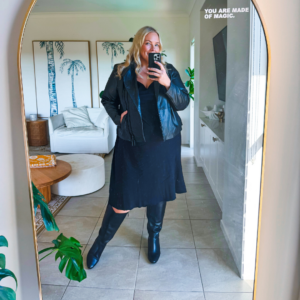
I am the mother to a teen with additional needs (which I share with her permission).
The interesting thing with parenting a child with additional needs, for the first however-many years, it felt like I was parenting on an island. I know every parenting journey is different, but mine felt like I was out in the middle of the ocean with no other island in sight.
I hadn’t connected with other parents on similar journeys (and yep, it’s a journey).
And then I found them. I think it was not long after writing this article about getting our first diagnosis, and the emails and messages started pouring in. “You should join this group!” or “You’ll find this person SUPER helpful!” and finally I wasn’t alone.
That feeling of belonging, and that sharing of knowledge and experience, is why I think it’s so important to continue to share (which can be a delicate dance with respecting privacy but also allowing my own journey as a parent to be shared), because these experiences, advice and learnings are so helpful.
Which is why I wanted to share something that was helpful when my daughter was attending mainstream school. I would send a letter to the teachers before the year started (or even just as the year started) to introduce myself and my daughter, and explain her needs.
Now that we’ve moved to Distance Education (an online learning school system), I still do a similar style of communication, although it’s a little easier as we have more contact with the team.
Why I sent a letter to my daughter’s teachers each year
When my daughter was attending private school, we had major discussions around her needs the year prior, in planning for the following year. It was intensive, and supportive, and while needs change as they grow, I really loved that there was always plans in place, and they were constantly updating and adapting them according to her needs.
When we moved to a public school system, I noticed that things were a little different (I’m a big fan of public schools, so not dissing them at all), and there wasn’t the same level of support or communication (simply because the school system doesn’t have the capacity to support it, especially with invisible disabilities).
So, each year I sent a letter to the teachers to let them know a few things about my daughter, to help understand her needs, to let them know that we’re hands on and want to support her as much as possible, and also just to fast-track any learning for them around her needs that might otherwise take months/terms to learn.
I also learned that, probably because of the work load, not all information gets passed on from support teams to classroom teachers, so sending a quick email is an easy way to get messaging across.
What’s in the letter
First of all, I keep it short-ish. No one needs to read an essay. I cover off the following in the letter:
- A quick hello. Because I was sending the letter in high school, I’d be sending the email to the head teacher or support teacher and asking her to pass on to the classroom teachers. Below that I would put the body of the email.
- An intro. This would be a simple intro to myself, and then telling them that I’m the parent of my daughter who will be in your classes this year.
- Details of her diagnosis (and any medication, as an FYI). I would explain that my daughter is diagnosed with ADHD and anxiety, and that she takes medication (she no longer does, but at that stage she did) before school. I also explained that her ability to concentrate lessens in the afternoon as the medication wears off, so they may notice she’s day dreaming or struggling to focus as intently.
- Explain any learning difficulties. I briefly explained any areas she might have challenges, and any work arounds we’ve found work. Simple things like moving her to the front of the classroom, repeating information, and giving extra time at test time or with assignments.
- Offer your support. It was really important that the teacher didn’t feel like they were being hand-balled everything in the email and feel like they were being made to fix it or just deal with it. The idea is that information is power, and that’s what I was trying to achieve. So, at the end of the email I would also explain that I am available and ready to support, or hear any concerns they have.
I’ve included a template of the letter you can use as please, in case it helps! Grab it below.
GET THE LETTER TO TEACHER TEMPLATE HERENote: I found in public school systems getting support outside of the classroom was often challenging, especially with invisible disabilities, and un-diagnosed learning difficulties – diagnoses take time, and learning still need to happen while this process is happening, so sometimes an email like this can help.





